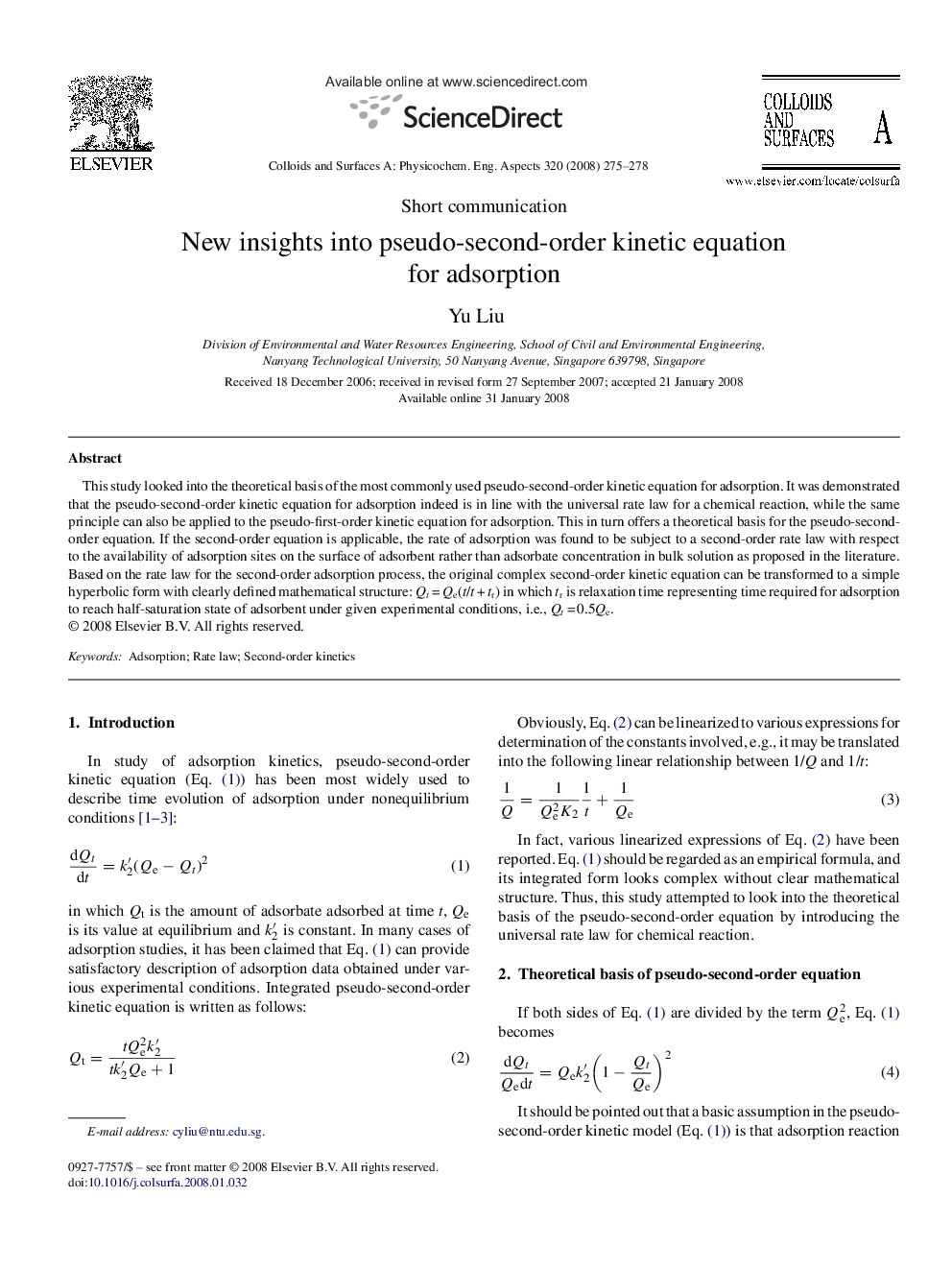| Article ID | Journal | Published Year | Pages | File Type |
|---|---|---|---|---|
| 596760 | Colloids and Surfaces A: Physicochemical and Engineering Aspects | 2008 | 4 Pages |
This study looked into the theoretical basis of the most commonly used pseudo-second-order kinetic equation for adsorption. It was demonstrated that the pseudo-second-order kinetic equation for adsorption indeed is in line with the universal rate law for a chemical reaction, while the same principle can also be applied to the pseudo-first-order kinetic equation for adsorption. This in turn offers a theoretical basis for the pseudo-second-order equation. If the second-order equation is applicable, the rate of adsorption was found to be subject to a second-order rate law with respect to the availability of adsorption sites on the surface of adsorbent rather than adsorbate concentration in bulk solution as proposed in the literature. Based on the rate law for the second-order adsorption process, the original complex second-order kinetic equation can be transformed to a simple hyperbolic form with clearly defined mathematical structure: Qt = Qe(t/t + tr) in which tr is relaxation time representing time required for adsorption to reach half-saturation state of adsorbent under given experimental conditions, i.e., Qt = 0.5Qe.
